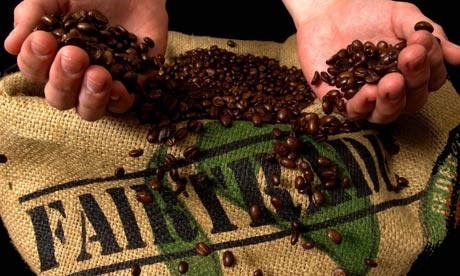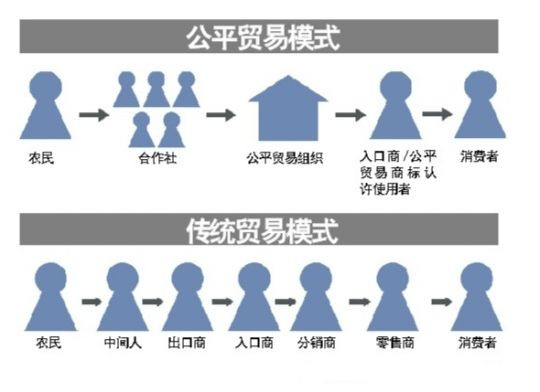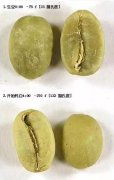New Fair Trade Relation Coffees Coffee and Bean seller
"The new Fair Trade-building relationships and generating credibility among peers-is the new Fair Trade, and we call it Relationship Coffees."
Fairtrade is a viable solution when coffee prices are low. This is no longer the case. Fairtrade has become a common form of trade in premium specialty coffee, and coffee growers are well aware of their bargaining power.

You may ask, what is fair trade? I don't think many people know the answer-sometimes even coffee growers don't really appreciate the importance of the term, and they may simply associate "fair trade" with their company logo.
The Fair Trade Organisation defines it as: "Fair trade is about securing better prices and decent working conditions for growers and workers in developing countries, maintaining local sustainability and fair trade terms." This requires trading companies to pay sustainable prices, which usually cannot be lower than market prices. Fairtrade also addresses traditional trade inequities, which discriminate against vulnerable, poor growers. Fair trade helps improve the social status and quality of life of growers."
Because Fair Trade only considers the supplier side of the trade, the definition of Fair Trade is imperfect, and coffee prices increased by 86% between March 2010 and March 2011. No one cares about the interests of coffee buyers, causing many buyers to suffer greatly. I think fair trade should mean what it means. Goods should be bought and sold fairly, and both sides of the trade should get a fair return from the transaction according to the quality and price of the goods.
It is worth looking back at history to see how fair trade came about and what important impacts it has had on the coffee industry. Fairtrade was first proposed by religious figures and NGOs in the 1940s and 1950s, mainly for handicrafts sold to churches, and more for donations.
Modern Fair Trade was born in Europe in the 1960s as a slogan and tool to resist capitalism. In response to the strong advocacy of many developing countries, the United Nations formally launched the Fair Trade Movement at the Conference on Trade and Development.
Later, various organizations were formed, and many shops were established to buy and sell goods according to fair trade principles. Among the first to contact fair trade were alternative trade organizations and Oxfam. With the success of these Fairtrade stores, the idea of Fairtrade certificates and labels was born. These ideas are intended to make markets more transparent and to promote fair trade in global markets. By implementing these ideas, fair trade goods can be implemented in a wider range of markets and transaction chains. In 2012, the Fair Trade Organization issued the International Fair Trade Certification Mark.

Consumers are willing to pay higher prices for Fairtrade goods, but what they don't know is whether the extra price they pay is paid to poorer growers and workers or transferred to profitable dealers or large landowners. Another criticism is that inflation is exacerbated by buying the same product at a higher price, increasing the cost of living for the buyer's family. Also, the lack of monitoring allows excessive use of the Fairtrade logo and breeds corruption.
With respect to coffee, coffee prices remained relatively low around 2000, at about 150 cents a pound. The cost of growing coffee was increasing and reaching unaffordable prices for farmers, so Fairtrade coffee successfully solved this problem and sold for higher prices. In this way, fair trade certification marks have a certain value. A few years later, with the increasing use of the Fairtrade certification mark in world markets, abuse of the mark began to occur. Some large landowners do not pay the high prices coffee sells to growers, and their working conditions are still poor, while some companies in developed countries use Fairtrade certification as a marketing gimmick, forgetting to help those growers in the first place.
Coffee prices rose intermittently in 2010, and even more so for coffee bearing the Fairtrade mark. Many buyers believe that the price of coffee with fair trade certification is too high, which is gradually becoming a consensus in the coffee industry. Fairtrade-certified coffee is now purchased in quantities that are not much different from regular coffee.
In this case, a question arises: since the early 1960s, buyers have been helping growers, so now growers can help buyers when profits are high. Is this fair trade? Moreover, more and more growers are beginning to be educated about trade and they have mastered the ability to negotiate on the world coffee market.
Professional buyers like us are starting to trade fairly in a new way, which I call "relationship coffee." We want to make sure that coffee growers are doing it right-growing under the right conditions, picking the beans correctly, handling the beans in clean and hygienic conditions, and finally meeting certain standards for the appearance of the coffee. If we do that, we will pay the growers the price they deserve. In this way, they are satisfied with the price, we are satisfied with the product, and both parties are satisfied. Isn't this the so-called fair trade? We have established long-standing personal relationships with all the growers we are associated with, and they can hear our concerns and we can listen to theirs. And we've created a middle ground where we can all improve and surpass, which is the new Fair Trade.
Important Notice :
前街咖啡 FrontStreet Coffee has moved to new addredd:
FrontStreet Coffee Address: 315,Donghua East Road,GuangZhou
Tel:020 38364473
- Prev

Introduction to temperature and time difference in Coffee roasting
Coffee roasting is a skill that is easy to learn but difficult to master, which requires long-term training and the accumulation of knowledge about coffee beans. Through the roasted coffee beans for beans, cup testing, communication of the actual combat link, so as to analyze the beauty of the coffee in the cup! The following is the coffee bean in the roasting process with the extension of time, the increase of coffee bean roasting temperature, coffee bean color change, to make a good coffee
- Next

Is it healthy to drink coffee for preventable diseases?
I often say to my patients, if you like coffee, drink as much as you can. Said Peter Martin, dean of the School of Coffee Studies at Vanderbilt University. As for how to control the amount of coffee you drink, Martin believes that if coffee has affected your sleep, then you should drink one less cup, which should be the last cup of the day. If you
Related
- Beginners will see the "Coffee pull flower" guide!
- What is the difference between ice blog purified milk and ordinary milk coffee?
- Why is the Philippines the largest producer of crops in Liberia?
- For coffee extraction, should the fine powder be retained?
- How does extracted espresso fill pressed powder? How much strength does it take to press the powder?
- How to make jasmine cold extract coffee? Is the jasmine + latte good?
- Will this little toy really make the coffee taste better? How does Lily Drip affect coffee extraction?
- Will the action of slapping the filter cup also affect coffee extraction?
- What's the difference between powder-to-water ratio and powder-to-liquid ratio?
- What is the Ethiopian local species? What does it have to do with Heirloom native species?

